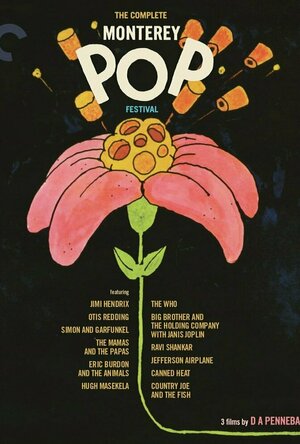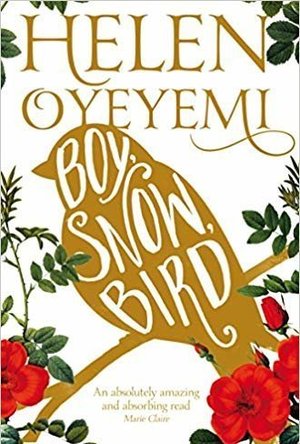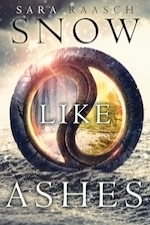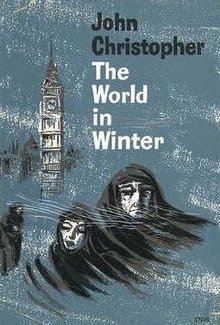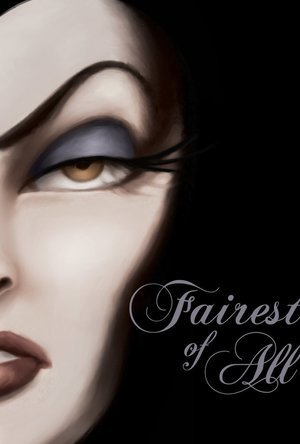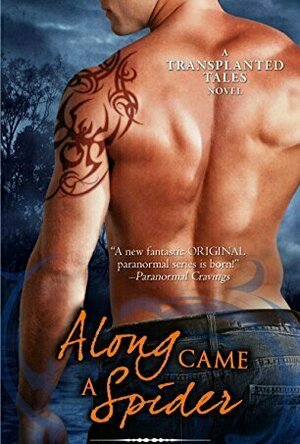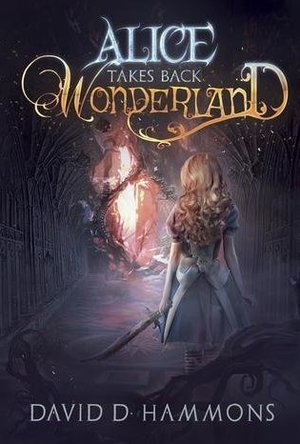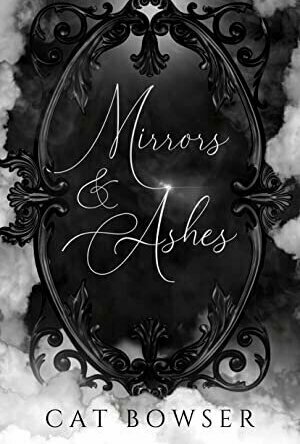Search
Search results
John Taylor recommended Monterey Pop (1968) in Movies (curated)
Whatchareadin (174 KP) rated Boy, Snow, Bird in Books
May 10, 2018
A girl named Boy, a girl named Snow and a girl named Bird. Three unique names for three unique individuals. It's 1953 and Boy is living in New York, the daughter of a rat catcher. She has never known her mother. Boy "was a girl with a white-blonde pigtail hanging down over one shoulder..." When life with her father got to be too much, she packed her stuff and moved to the farthest place she could get on the bus, Flax Hill, CT.
Quickly, Boy made friends and met a man, Arturo Whitman. Arturo has a daughter named Snow, who the whole town adored. Shortly after Arturo and Boy are married, she becomes pregnant. When she gives birth to her daughter, Bird, the Whitman family secrets soon come to light.
There is an underlying theme in this book with mirrors. The women claim that they do not "see" themselves in them. Is it because they are ghosts? Or is it that their family secrets run so deep that they find it hard to see themselves as they really are?
This book reminded me of books I had to read for school. I enjoyed the storyline as a whole, but reading it, I felt as though there were questions I was supposed to be searching the answers for instead of just enjoying the book. There are so many secrets throughout the entire book with the biggest secret coming at the end. Told in three sections by Boy, Bird, and then Boy again, this is very interesting story about race in the north in the 50's and 60's.
Quickly, Boy made friends and met a man, Arturo Whitman. Arturo has a daughter named Snow, who the whole town adored. Shortly after Arturo and Boy are married, she becomes pregnant. When she gives birth to her daughter, Bird, the Whitman family secrets soon come to light.
There is an underlying theme in this book with mirrors. The women claim that they do not "see" themselves in them. Is it because they are ghosts? Or is it that their family secrets run so deep that they find it hard to see themselves as they really are?
This book reminded me of books I had to read for school. I enjoyed the storyline as a whole, but reading it, I felt as though there were questions I was supposed to be searching the answers for instead of just enjoying the book. There are so many secrets throughout the entire book with the biggest secret coming at the end. Told in three sections by Boy, Bird, and then Boy again, this is very interesting story about race in the north in the 50's and 60's.
Whatchareadin (174 KP) rated Boy, Snow, Bird in Books
Apr 3, 2019
A girl named Boy, a girl named Snow and a girl named Bird. Three unique names for three unique individuals. It's 1953 and Boy is living in New York, the daughter of a rat catcher. She has never known her mother. Boy "was a girl with a white-blonde pigtail hanging down over one shoulder..." When life with her father got to be too much, she packed her stuff and moved to the farthest place she could get on the bus, Flax Hill, CT.
Quickly, Boy made friends and met a man, Arturo Whitman. Arturo has a daughter named Snow, who the whole town adored. Shortly after Arturo and Boy are married, she becomes pregnant. When she gives birth to her daughter, Bird, the Whitman family secrets soon come to light.
There is an underlying theme in this book with mirrors. The women claim that they do not "see" themselves in them. Is it because they are ghosts? Or is it that their family secrets run so deep that they find it hard to see themselves as they really are?
This book reminded me of books I had to read for school. I enjoyed the storyline as a whole, but reading it, I felt as though there were questions I was supposed to be searching the answers for instead of just enjoying the book. There are so many secrets throughout the entire book with the biggest secret coming at the end. Told in three sections by Boy, Bird, and then Boy again, this is very interesting story about race in the north in the 50's and 60's.
Quickly, Boy made friends and met a man, Arturo Whitman. Arturo has a daughter named Snow, who the whole town adored. Shortly after Arturo and Boy are married, she becomes pregnant. When she gives birth to her daughter, Bird, the Whitman family secrets soon come to light.
There is an underlying theme in this book with mirrors. The women claim that they do not "see" themselves in them. Is it because they are ghosts? Or is it that their family secrets run so deep that they find it hard to see themselves as they really are?
This book reminded me of books I had to read for school. I enjoyed the storyline as a whole, but reading it, I felt as though there were questions I was supposed to be searching the answers for instead of just enjoying the book. There are so many secrets throughout the entire book with the biggest secret coming at the end. Told in three sections by Boy, Bird, and then Boy again, this is very interesting story about race in the north in the 50's and 60's.
Goddess in the Stacks (553 KP) rated Snow like Ashes in Books
Oct 9, 2018
The world-building in this book is fascinating. At first, it seems like yet another YA novel about displaced royals trying to win back their kingdom, but this royal is in much more dire straits than most. Meira is a refugee living on the run with seven others, one of them her rightful King. All the rest of their people have been enslaved by the conquering country, and their kingdom's link to the magic inherent in the land has been broken.
A little backdrop is needed. In Meira's land, there are eight countries. The Rhythm countries, where seasons proceed as normal, and the Seasons - 4 countries locked in one season each. The rulers of each country have a magic conduit that lets them feed magic to their people - but the conduits are gender-locked. In four of the countries, only women can use the conduit; in the other four, only men. Meira and her little band are all that's left of the free people of Winter. Spring invaded sixteen years ago, killed Winter's queen, broke the locket that was their magic conduit (each ruler has one) and enslaved their people. Because the queen only had a son, he can't wield Winter's magic anyway. They're still trying to find the two pieces of the locket so when he has a daughter, she can wield it. You'd think at this point, since he's of age, he should be trying to get as many women pregnant as possible to up the odds of getting a royal heir who can wield the magic, but that...doesn't come up.
The book does delve into the country's people being oppressed, used as slaves, and being incredibly abused by the conquering country, and this is where I ran into a quandary. The Season's people reflect their countries: Autumn's people have copper skin, Spring's citizens are blond-haired and green-eyed - and Winter's people are white. Pale skin, snow-white hair, blue eyes. Writing white people as the oppressed people just rubs me the wrong way. (In that false "help I'm being oppressed because other people want equal rights!" kind of way.) Yes, this is fantasy, yes, it has nothing to do with our world's politics - but it bothers me. It's at least not white-savioring, as Meira's trying to save her own people, but I don't know. Is it better or worse to write white people as the oppressed protagonists?
That question aside, this was a well-written novel of fighting against an oppressor. There is definitely still work to be done at the end of the book, and there are two more books, as well as two short stories. While I am a little curious what ultimately happens, I don't know if the series has earned more time on my reading list.
You can find all my reviews at http://goddessinthestacks.com
A little backdrop is needed. In Meira's land, there are eight countries. The Rhythm countries, where seasons proceed as normal, and the Seasons - 4 countries locked in one season each. The rulers of each country have a magic conduit that lets them feed magic to their people - but the conduits are gender-locked. In four of the countries, only women can use the conduit; in the other four, only men. Meira and her little band are all that's left of the free people of Winter. Spring invaded sixteen years ago, killed Winter's queen, broke the locket that was their magic conduit (each ruler has one) and enslaved their people. Because the queen only had a son, he can't wield Winter's magic anyway. They're still trying to find the two pieces of the locket so when he has a daughter, she can wield it. You'd think at this point, since he's of age, he should be trying to get as many women pregnant as possible to up the odds of getting a royal heir who can wield the magic, but that...doesn't come up.
The book does delve into the country's people being oppressed, used as slaves, and being incredibly abused by the conquering country, and this is where I ran into a quandary. The Season's people reflect their countries: Autumn's people have copper skin, Spring's citizens are blond-haired and green-eyed - and Winter's people are white. Pale skin, snow-white hair, blue eyes. Writing white people as the oppressed people just rubs me the wrong way. (In that false "help I'm being oppressed because other people want equal rights!" kind of way.) Yes, this is fantasy, yes, it has nothing to do with our world's politics - but it bothers me. It's at least not white-savioring, as Meira's trying to save her own people, but I don't know. Is it better or worse to write white people as the oppressed protagonists?
That question aside, this was a well-written novel of fighting against an oppressor. There is definitely still work to be done at the end of the book, and there are two more books, as well as two short stories. While I am a little curious what ultimately happens, I don't know if the series has earned more time on my reading list.
You can find all my reviews at http://goddessinthestacks.com
ArecRain (8 KP) rated Snow's Seduction (A Snow White Werewolf Tale, #1) in Books
Jan 18, 2018
This is supposed to be a Snow White retelling but I really couldnt see it. Regardless, its an erotic fairytale retelling which is right up my alley. Its heavy on the erotica while still having enough plot to push the story forward. Normally I would be aggravated that this story is divided into three parts but I knew that going in and already had the rest of the story so I didnt have to wait for the rest.
I love friends to lovers stories, especially childhood friends. I would like to say I enjoyed the premise to this story but honestly I thought it was stupid. I wish I had better word but there it is. Now you may be saying but you knew that going in! Honestly, I was hoping it was going to be a menage. I guess it was just wishful thinking, because what I got instead was the age old hey let me ask my male friend how to seduce this other male but wait my friend wants me trope.
All in all, definitely worth the read.
I love friends to lovers stories, especially childhood friends. I would like to say I enjoyed the premise to this story but honestly I thought it was stupid. I wish I had better word but there it is. Now you may be saying but you knew that going in! Honestly, I was hoping it was going to be a menage. I guess it was just wishful thinking, because what I got instead was the age old hey let me ask my male friend how to seduce this other male but wait my friend wants me trope.
All in all, definitely worth the read.
Awix (3310 KP) rated The World in Winter in Books
Sep 5, 2019
Christopher's tale of the onset of a new ice age and its consequences is told with his usual clarity and strength of characterisation. The sun dims slightly; northern Europe vanishes under ice and snow, and the wealthy and powerful relocate to closer to the equator.
What makes the book a bit problematic for a modern reader is that some of the attitudes in it feel uncomfortably close to outright racism - it almost feels like a cautionary parable about what would happen if the traditional colonial roles were reversed and Africans were in a position of power over Europeans. That the book is a product of the era when the British Empire was dissolving is obvious, and the racial attitudes do impact on the story - protagonist and antagonist form an alliance at the end, despite a long history of bitter conflict between them, simply because they are both white men and the alternative is to allow Africans to dominate the UK. While the book should be considered in the context of its time, it still leaves a very sour taste in the mouth, quite unlike any of the author's other books.
What makes the book a bit problematic for a modern reader is that some of the attitudes in it feel uncomfortably close to outright racism - it almost feels like a cautionary parable about what would happen if the traditional colonial roles were reversed and Africans were in a position of power over Europeans. That the book is a product of the era when the British Empire was dissolving is obvious, and the racial attitudes do impact on the story - protagonist and antagonist form an alliance at the end, despite a long history of bitter conflict between them, simply because they are both white men and the alternative is to allow Africans to dominate the UK. While the book should be considered in the context of its time, it still leaves a very sour taste in the mouth, quite unlike any of the author's other books.
Lottie disney bookworm (1056 KP) rated Fairest of All: A Tale of the Wicked Queen (Villains #1) in Books
Aug 16, 2019
Review by Disney Bookworm
This is my first foray into the villain’s series so I thought I should read them in order. The collection has been on my “to read” list forever but the twisted tales series kept multiplying and skipping the queue! As I am a good girl and never break the rules, I started with book one: Fairest of All.
I will say that this series of books are quite thin and are an easy read. This may be due to them falling into the Young Adult category but I can safely add them into the “busy working mum” category too. (P.S. Booksirens, NetGalley and Goodreads: this should definitely become a category!)
Personally, I didn’t have high hopes for these books due to some of the reviews that I read beforehand, particularly those that refer to the series as “fan fiction”. However, in these cases, I believe the reviewers in question have missed the point of these novels: these are not to be compared with twisted tales as they are not retellings. These novels provide a backstory to our villains: a different perspective that explores the circumstances around their evil actions.
Fairest of All tells the tale of the Wicked Queen from Snow White before she became wicked. The reader is introduced to a new bride who loves her husband, the king, and adores her new stepdaughter Snow White. Snow returns her stepmother’s love, referring to her as “momma”, and the little family are perfectly happy and content, attending celebrations in the kingdom and having cosy dinners in the castle. Their life truly is idyllic, that is, until the call of battle draws the king away.
Initially little is said of the Queen’s life before she met the king. We know her father was a renowned mirror maker and her mother was considered extraordinarily beautiful before her untimely death.
However, the Queen’s former life is slowly revealed: a heartbreaking tale that exposes the vulnerability of the monarch and endears her to the reader. Suddenly, it seems almost natural that a person so deprived of love could possess such vanity and unthinkable that this character could descend into madness: committing the evil deeds that we know lie in the upcoming pages.
Despite her flaws, I found I never identified with the Queen fully as a human character. I suspect this is because the Queen is only referred to by her title throughout the novel; a curious method by Valentino. Is Valentino keeping us focused on her fate as the Wicked Queen? Perhaps she is suggesting that the Queen has never been her own woman: merely a tortured mirror maker’s daughter who became a figurehead and a mother in one fell swoop?
The Queen is such a complex character that all the other characters in the book seem quite flat in comparison. Again, I suspect this is intentional: the tale is from the Queen’s perspective after all. Nevertheless, the reader is reunited with old characters such as Snow, the huntsman and the mirror as well as being introduced to new characters, the most notable of which are the three cousins of the King.
The Odd Sisters are described as such from the beginning: a titbit I greatly enjoyed as their novel has recently been released. They are fascinating characters, always keeping the reader on their toes and causing us to never quite know whether they are pure evil or simply insane. Their transparent disappointment that the Queen is not an evil stepmother and their candid conversations about magic cause worry for characters and readers alike: it is clear that they have more than a passing impact on the Queen’s demise.
The names of the characters within this novel possess a clear imagery of light and darkness. Snow and Verona (Latin for a true/honest image) bring out a side to the Queen that is the polar opposite of that of the odd sisters and the magic mirror; who is often referred to as “the Slave”. I’m sure this is how the Queen sees the relationship but the reader sees this from an entirely different perspective. Although the face appears to do her bidding, it becomes more apparent that the power within the relationship does not lie with the Queen.
Overall, I really enjoyed this novel. In my opinion it stayed true to the fairytale without purely repeating the story. Valentino humanised the Queen for the reader before promptly showing how hiding your vulnerabilities and not accepting help can lead you down a dangerous path. The Queen is not evil from the beginning: in fact, she shows her capacity for love throughout, but her depression, grief and madness gradually consume her.
For me, the twist in the final few pages make this book a must read. I still can’t decide whether Valentino has made the docile, simple character of Snow into a strong heroine or whether she has upturned all of our childhoods and is hinting at a darker side. Needless to say, I can’t wait to see what comes next.
I will say that this series of books are quite thin and are an easy read. This may be due to them falling into the Young Adult category but I can safely add them into the “busy working mum” category too. (P.S. Booksirens, NetGalley and Goodreads: this should definitely become a category!)
Personally, I didn’t have high hopes for these books due to some of the reviews that I read beforehand, particularly those that refer to the series as “fan fiction”. However, in these cases, I believe the reviewers in question have missed the point of these novels: these are not to be compared with twisted tales as they are not retellings. These novels provide a backstory to our villains: a different perspective that explores the circumstances around their evil actions.
Fairest of All tells the tale of the Wicked Queen from Snow White before she became wicked. The reader is introduced to a new bride who loves her husband, the king, and adores her new stepdaughter Snow White. Snow returns her stepmother’s love, referring to her as “momma”, and the little family are perfectly happy and content, attending celebrations in the kingdom and having cosy dinners in the castle. Their life truly is idyllic, that is, until the call of battle draws the king away.
Initially little is said of the Queen’s life before she met the king. We know her father was a renowned mirror maker and her mother was considered extraordinarily beautiful before her untimely death.
However, the Queen’s former life is slowly revealed: a heartbreaking tale that exposes the vulnerability of the monarch and endears her to the reader. Suddenly, it seems almost natural that a person so deprived of love could possess such vanity and unthinkable that this character could descend into madness: committing the evil deeds that we know lie in the upcoming pages.
Despite her flaws, I found I never identified with the Queen fully as a human character. I suspect this is because the Queen is only referred to by her title throughout the novel; a curious method by Valentino. Is Valentino keeping us focused on her fate as the Wicked Queen? Perhaps she is suggesting that the Queen has never been her own woman: merely a tortured mirror maker’s daughter who became a figurehead and a mother in one fell swoop?
The Queen is such a complex character that all the other characters in the book seem quite flat in comparison. Again, I suspect this is intentional: the tale is from the Queen’s perspective after all. Nevertheless, the reader is reunited with old characters such as Snow, the huntsman and the mirror as well as being introduced to new characters, the most notable of which are the three cousins of the King.
The Odd Sisters are described as such from the beginning: a titbit I greatly enjoyed as their novel has recently been released. They are fascinating characters, always keeping the reader on their toes and causing us to never quite know whether they are pure evil or simply insane. Their transparent disappointment that the Queen is not an evil stepmother and their candid conversations about magic cause worry for characters and readers alike: it is clear that they have more than a passing impact on the Queen’s demise.
The names of the characters within this novel possess a clear imagery of light and darkness. Snow and Verona (Latin for a true/honest image) bring out a side to the Queen that is the polar opposite of that of the odd sisters and the magic mirror; who is often referred to as “the Slave”. I’m sure this is how the Queen sees the relationship but the reader sees this from an entirely different perspective. Although the face appears to do her bidding, it becomes more apparent that the power within the relationship does not lie with the Queen.
Overall, I really enjoyed this novel. In my opinion it stayed true to the fairytale without purely repeating the story. Valentino humanised the Queen for the reader before promptly showing how hiding your vulnerabilities and not accepting help can lead you down a dangerous path. The Queen is not evil from the beginning: in fact, she shows her capacity for love throughout, but her depression, grief and madness gradually consume her.
For me, the twist in the final few pages make this book a must read. I still can’t decide whether Valentino has made the docile, simple character of Snow into a strong heroine or whether she has upturned all of our childhoods and is hinting at a darker side. Needless to say, I can’t wait to see what comes next.
Leanne Crabtree (480 KP) rated Along Came a Spider (Transplanted Tales, #3) in Books
Sep 6, 2019
The main thing I liked about this story was how the characters were rarely how they were portrayed in their particular rhyme or story, for example, Olivia Snow White running an adult business; whod have thought?? Haha :P
Its brilliant and contains almost all of our favourite characters from Al Addin to Juliet Capulet (she gets mentioned, anyway)
Im just sorry I missed the first two books in the series though they arent really necessary to understand this one, and I presume tell the story of two of the other couples mentioned in this one (Red and Nate and Lavender and Seth). I have to admit the author does a good job of making sure you dont miss out on much that happened in the previous books by retelling it from another characters viewpoint, though it isnt quite the same as reading it as it happened, if you know what I mean. It isnt necessary but it is an advantage to read Red and The Better to See You before this one.
That being said, the author has a great style of writing and I was quickly dragged into the story. Its a mix of action, mystery and romance. What more could you ask for?
Its brilliant and contains almost all of our favourite characters from Al Addin to Juliet Capulet (she gets mentioned, anyway)
Im just sorry I missed the first two books in the series though they arent really necessary to understand this one, and I presume tell the story of two of the other couples mentioned in this one (Red and Nate and Lavender and Seth). I have to admit the author does a good job of making sure you dont miss out on much that happened in the previous books by retelling it from another characters viewpoint, though it isnt quite the same as reading it as it happened, if you know what I mean. It isnt necessary but it is an advantage to read Red and The Better to See You before this one.
That being said, the author has a great style of writing and I was quickly dragged into the story. Its a mix of action, mystery and romance. What more could you ask for?
Sophia (Bookwyrming Thoughts) (530 KP) rated Alice Takes Back Wonderland in Books
Jan 23, 2020
Review copy provided by the publisher via Netgalley
This review and more can be found at <a href="http://www.inwonderlandbookblog.com/2016/01/alice-takes-back-wonderland-review.html">In Wonderland</a>
Alice Takes Back Wonderland is one peculiar book – it took awhile for me to get into the story, but not bad overall (I've read worse).
The main character, Alice, is a little similar to Alyssa from Splintered – she talks to bugs and flowers, and they talk to her as well. And unlike Alyssa, who keeps her "ability" a secret, those around Alice assume she's a nutcase – she's been assumed to have schizophrenia along with ADHD. Alice also isn't related to Wonderland Alice – she just ended up going down the rabbit hole at seven and came back a completely different person.
Years later, just when Alice thinks everything in Wonderland was an imagination, the White Rabbit appears again to bring Alice back to save Wonderland. There, Ace of Spades has taken over the land and has been trying to "humanize" the creatures by taking the wonder out of them, thus taking Alice back down the rabbit hole once more.
When Hammons introduces us to Wonderland and Alice tries to reunite with the creatures she met when she was seven, it's really hard to get into the story (and at the beginning too – no fun). There's a lot of nonsense going on in Wonderland with very little sense – I haven't read Alice In Wonderland by Lewis Carroll myself, but I personally think Hammons did a pretty good job trying to capture the nonsensical aspect Carroll uses in the original story.
Now, in the case of getting me to read the story, however, I'm starting to think I should just call it off (much to Ella's dismay).
As soon as Alice leaves Wonderland to recruit other kingdoms (fairy tales), on the other hand, the story becomes less nonsensical and more of something that I could fully comprehend and wrap my head around. (I got the gist of Wonderland – I did not understand what all the creatures were saying.) Hammons introduces us Peter Pan and the Lost Boys, Pinocchio, Cinderella, Snow White, Sleeping Beauty – all recognizable in some way. But that's not all the fairy tales involved.
Hammons also throws in heroes of myth and legend as well – people such as Joan the Ark, Hercules, King Arthur, Loki, etc. At that point, I pretty much took a step back (or almost) from the book. There are way too many tales involved in this battle to take back Wonderland and stop the Ace of Spades from taking the wonder out of everyone. Those characters don't play a major role like Peter Pan, Pinocchio, Snow White, and all the ones mentioned earlier, so it's less confusing. I just think Hammons should have kept it strictly at fairy tales rather than all of them.
(I'll give him this: all of them are individual kingdoms instead of mushed together into one. Less confusing.)
To make it worse, most of the characters also play multiple roles, which I won't say because I might spoil something. But still – too much myth and legend is mentioned in this vast world Hammons creates.
Overall, not bad for a book that takes far too many tales into its plot. It takes some time to get used to the story, but once you get past Wonderland's bit of remaining nonsense and enter Neverland and the Grimm Kingdom, the story has an adventure or two as Alice learns that maybe fairy tales aren't as literal as they seem.
This review and more can be found at <a href="http://www.inwonderlandbookblog.com/2016/01/alice-takes-back-wonderland-review.html">In Wonderland</a>
Alice Takes Back Wonderland is one peculiar book – it took awhile for me to get into the story, but not bad overall (I've read worse).
The main character, Alice, is a little similar to Alyssa from Splintered – she talks to bugs and flowers, and they talk to her as well. And unlike Alyssa, who keeps her "ability" a secret, those around Alice assume she's a nutcase – she's been assumed to have schizophrenia along with ADHD. Alice also isn't related to Wonderland Alice – she just ended up going down the rabbit hole at seven and came back a completely different person.
Years later, just when Alice thinks everything in Wonderland was an imagination, the White Rabbit appears again to bring Alice back to save Wonderland. There, Ace of Spades has taken over the land and has been trying to "humanize" the creatures by taking the wonder out of them, thus taking Alice back down the rabbit hole once more.
When Hammons introduces us to Wonderland and Alice tries to reunite with the creatures she met when she was seven, it's really hard to get into the story (and at the beginning too – no fun). There's a lot of nonsense going on in Wonderland with very little sense – I haven't read Alice In Wonderland by Lewis Carroll myself, but I personally think Hammons did a pretty good job trying to capture the nonsensical aspect Carroll uses in the original story.
Now, in the case of getting me to read the story, however, I'm starting to think I should just call it off (much to Ella's dismay).
As soon as Alice leaves Wonderland to recruit other kingdoms (fairy tales), on the other hand, the story becomes less nonsensical and more of something that I could fully comprehend and wrap my head around. (I got the gist of Wonderland – I did not understand what all the creatures were saying.) Hammons introduces us Peter Pan and the Lost Boys, Pinocchio, Cinderella, Snow White, Sleeping Beauty – all recognizable in some way. But that's not all the fairy tales involved.
Hammons also throws in heroes of myth and legend as well – people such as Joan the Ark, Hercules, King Arthur, Loki, etc. At that point, I pretty much took a step back (or almost) from the book. There are way too many tales involved in this battle to take back Wonderland and stop the Ace of Spades from taking the wonder out of everyone. Those characters don't play a major role like Peter Pan, Pinocchio, Snow White, and all the ones mentioned earlier, so it's less confusing. I just think Hammons should have kept it strictly at fairy tales rather than all of them.
(I'll give him this: all of them are individual kingdoms instead of mushed together into one. Less confusing.)
To make it worse, most of the characters also play multiple roles, which I won't say because I might spoil something. But still – too much myth and legend is mentioned in this vast world Hammons creates.
Overall, not bad for a book that takes far too many tales into its plot. It takes some time to get used to the story, but once you get past Wonderland's bit of remaining nonsense and enter Neverland and the Grimm Kingdom, the story has an adventure or two as Alice learns that maybe fairy tales aren't as literal as they seem.
Merissa (11643 KP) rated Mirrors and Ashes: A Snow White Retelling in Books
Mar 6, 2022
MIRRORS & ASHES is a fantastic Snow White retelling that encaptures the reader and holds their interest from start to finish.
Ember is the main female and she has a lot to put up with from her mother, which she is made to believe is her fault. When things in the kingdom start going wrong, Ember is the one they blame. She has made friends with the Dwarves though and is welcomed among them when she escapes the death that waits for her. Through them, she learns about who she is and what love truly is, and what forms it can come in. Romance plays a part here but is not the focus.
This was very well-written, with plenty of depth and detail, giving this a polished edged. I loved the Dwarven way of life, their language, their customs, etc. I loved seeing the growth of Ember from a child, to a woman of two cultures.
The pacing was perfect for the story, and it always flowed and never faltered. A great retelling that I thoroughly enjoyed and have no hesitation in recommending.
** same worded review will appear elsewhere **
* A copy of this book was provided to me with no requirements for a review. I voluntarily read this book, and the comments here are my honest opinion. *
Merissa
Archaeolibrarian - I Dig Good Books!
Ember is the main female and she has a lot to put up with from her mother, which she is made to believe is her fault. When things in the kingdom start going wrong, Ember is the one they blame. She has made friends with the Dwarves though and is welcomed among them when she escapes the death that waits for her. Through them, she learns about who she is and what love truly is, and what forms it can come in. Romance plays a part here but is not the focus.
This was very well-written, with plenty of depth and detail, giving this a polished edged. I loved the Dwarven way of life, their language, their customs, etc. I loved seeing the growth of Ember from a child, to a woman of two cultures.
The pacing was perfect for the story, and it always flowed and never faltered. A great retelling that I thoroughly enjoyed and have no hesitation in recommending.
** same worded review will appear elsewhere **
* A copy of this book was provided to me with no requirements for a review. I voluntarily read this book, and the comments here are my honest opinion. *
Merissa
Archaeolibrarian - I Dig Good Books!
